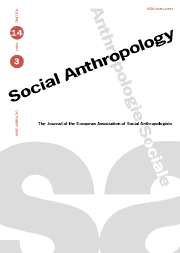Avenues of contestation. Football hooligans running and ruling urban spaces
Published online by Cambridge University Press: 31 October 2002
Abstract
Drawing upon extensive urban anthropological fieldwork with football hooligan formations in England and Scotland, it is argued that academics have failed to examine adequately the spatial dimension underlying hooligan conflicts. The spatially affective aspects of football fandom in general are identified; via Fiske's dichotomy of locales and stations, the contestation of space inside football grounds between fans, police and club directors is highlighted. From this milieu emerge the football hooligan gatherings, which are conceived as ‘resource networks’ utilising time, identity and information (Wallman), rather than as produced by processes or ‘ordered segmentation’ (Dunning). Subsequently, the paper turns to explore the historical trajectory of football hooliganism qua spatial contest between rival fans and police. The intensification of police control strategies has helped to engender a broadening of social spaces; contexts and techniques by which hooligans may ‘legitimately’ pursue confrontations. The process is complicated further in important ‘two team’ cities, wherein many popular social spaces retain an ambiguous status for local rivals acting in ostensibly non-football contexts. The concluding discussion critically assesses the effects and cultural meanings of increased police surveillance over football fans, noting the response of some hooligans in seeking to ‘arrange’ confrontations with rivals at extremely peripheral, non-football locations.
- Type
- Research Article
- Information
- Copyright
- © 2002 European Association of Social Anthropologists
Footnotes
- 29
- Cited by




